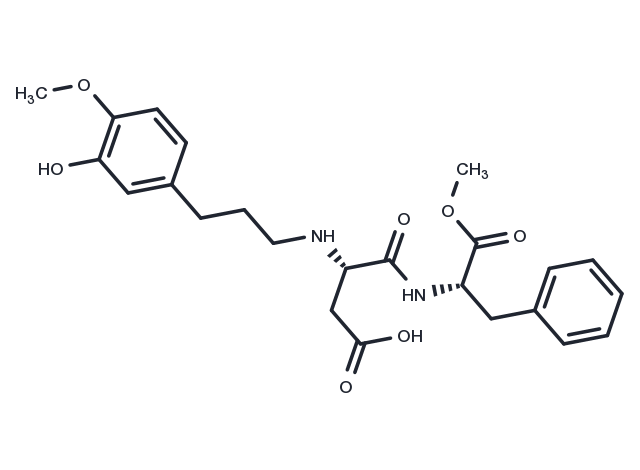Powder: -20°C for 3 years | In solvent: -80°C for 1 year


Advantame anhydrous is a non-caloric sweetener, synthesized from isovanillin and aspartame. The U.S. Food and Drug Administration has approved Advantame for general use in foods and beverages except for meat and poultry as a food additive.

| Pack Size | Availability | Price/USD | Quantity |
|---|---|---|---|
| 10 mg | Inquiry | $ 280.00 | |
| 25 mg | Inquiry | $ 487.00 | |
| 100 mg | Inquiry | $ 1,134.00 |
| Description | Advantame anhydrous is a non-caloric sweetener, synthesized from isovanillin and aspartame. The U.S. Food and Drug Administration has approved Advantame for general use in foods and beverages except for meat and poultry as a food additive. |
| Synonyms | Advantame |
| Molecular Weight | 458.5 |
| Formula | C24H30N2O7 |
| CAS No. | 245650-17-3 |
Powder: -20°C for 3 years | In solvent: -80°C for 1 year
You can also refer to dose conversion for different animals. More
bottom
Please see Inhibitor Handling Instructions for more frequently ask questions. Topics include: how to prepare stock solutions, how to store products, and cautions on cell-based assays & animal experiments, etc.
Advantame anhydrous 245650-17-3 Advantame inhibitor inhibit
